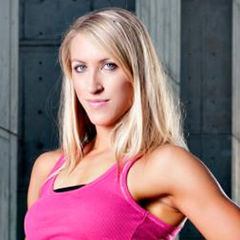Strength training is an important part of improving your overall fitness, and for women, it can mean much more. In addition to numerous health benefits, adding weights to your routine can become a form of personal development that builds strength in all areas of life. Join us over the next two weeks as we celebrate strength training and the strength of all women, no matter their size or life circumstance.
Gone are the days where endless cardio was the answer to improve your body composition. Today, there is no question that weight training is imperative for fat loss, strength gains, bone-density improvements, etc. But the gym can be an intimidating place, especially for those who are new to resistance training. Free weights, barbells and cable machines all look like torture devices to a newcomer, and the fear of “looking silly” or like you don’t know what you’re doing may hold you back. Here are a few tips and six beginner exercises targeting each major muscle group to get you started.
Remember…
-Don’t be afraid of what you may look like to other people while exploring new equipment. Most people training in the gym are way too focused on themselves to really notice anything else. That’s the great part about self-improvement—you tend to be self-absorbed in the moment, which is exactly how it should be!
-At some point, everyone in that gym picked up a weight or got on a new machine for the first time. You have to start somewhere, so the sooner you start, the sooner you will be an advanced exerciser and able to help someone else new with a few tricks.
-People with a passion for fitness will not judge. Every January, I hear excuses about how people will not start exercise yet because they do not want to look like “a New Year’s resolutioner.” Those of us with a drive, motivation and passion for fitness will be the first to tell you that seeing new people in the gym is motivating to us! It means that you are ready to take that step to get healthier. Anyone who gets upset at new people in the gym is not worth your time. Fitness is not exclusive, nor is it a privilege. It needs to be a priority. So when I see new people in the gym, I get a little happier, because that is one less person who will suffer the consequences of being unhealthy due to weight or inactivity. Plus, exercise improves your mood in the long run, and this world could use more happiness.
PROGRAMMING
For your first time in the gym, choose a weight that is relatively light so you can establish your stability and baseline strength. Do 10 to 15 repetitions with a light weight, and if you are stable and comfortable, increase your weight for your second and third sets. Ideally, for optimal strength and muscle growth, you need to “feel the burn” on those last few repetitions. Improvements happen when you step outside your comfort zone, so choose a weight that fatigues your muscles in 10 to 15 repetitions. Repeat each exercise for three sets. You can move in a circuit, combining three or more exercises and resting a short time between sets. Or, if your gym is very crowded, do one exercise at a time and rest for 30 seconds between each set. Start with at least two days per week and gradually progress to three. Working with an ACE Certified Fitness Professional is also a great way to stay motivated and achieve your health and fitness goals. You can find a trainer in your area by using the Find an ACE Pro tool.
A BEGINNER'S ROUTINE
Dumbbell Single Arm Row
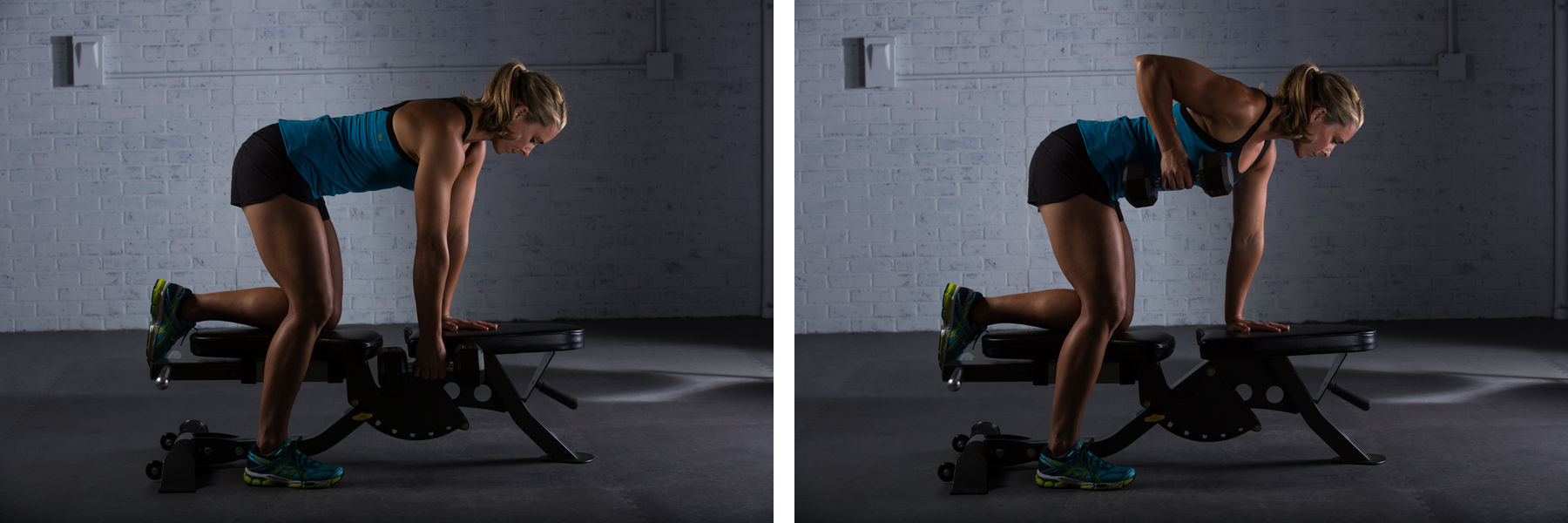
This is a great exercise to target the posterior deltoids, as well as the biceps. Place one hand and knee on a bench to support the body and let the opposite hand hold the dumbbell directly under the shoulder. Keeping the back straight and head in a neutral position, pull the elbow up and back along the side of the body. Bring the dumbbell up as high as possible, squeezing the shoulder in toward the midline of the body. Variations: Keep the elbow out to the side and pull the dumbbell up and out at a 90-degree angle. You may also choose to keep the elbow in with the row and then extend the elbow at the top of the motion for an extra emphasis on the triceps.
Dumbbell Shoulder Press
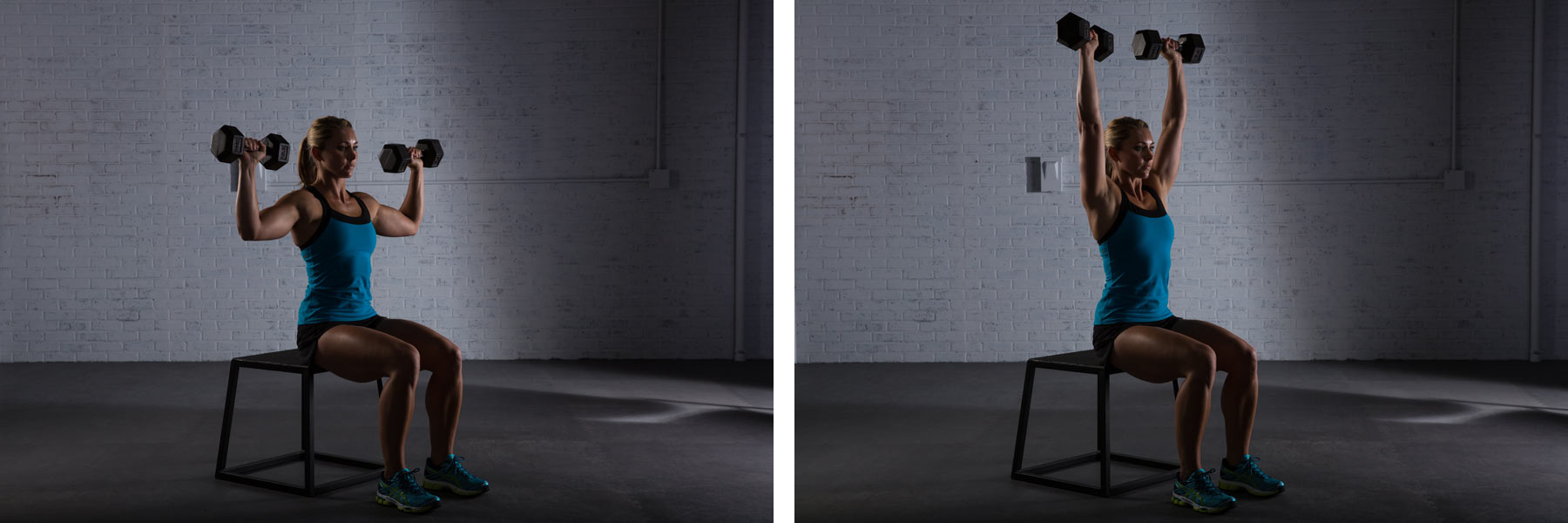
Dumbbells are great because they require muscular stability, and recruit slightly more muscles than you would doing the same exercise on a machine. Start with two light dumbbells. To avoid injury, focus on establishing shoulder stability before attempting to lift a heavy weight. Face a mirror and hold the dumbbells up with your palms forward on either side of your head, elbows bent at roughly 90 degrees. Slowly press the dumbbells up and over your head. Hold the top position for a second and then lower back down to either side of your head. Repeat your first set of 10 to 15 repetitions. If you feel comfortable, increase the dumbbell weight for your second set. Variations: Use a barbell, or vary the position of the dumbbells, for slightly different movement patterns. You can also work unilaterally by doing one arm at a time, which also adds a little core work to your press.
Stability Ball Squat
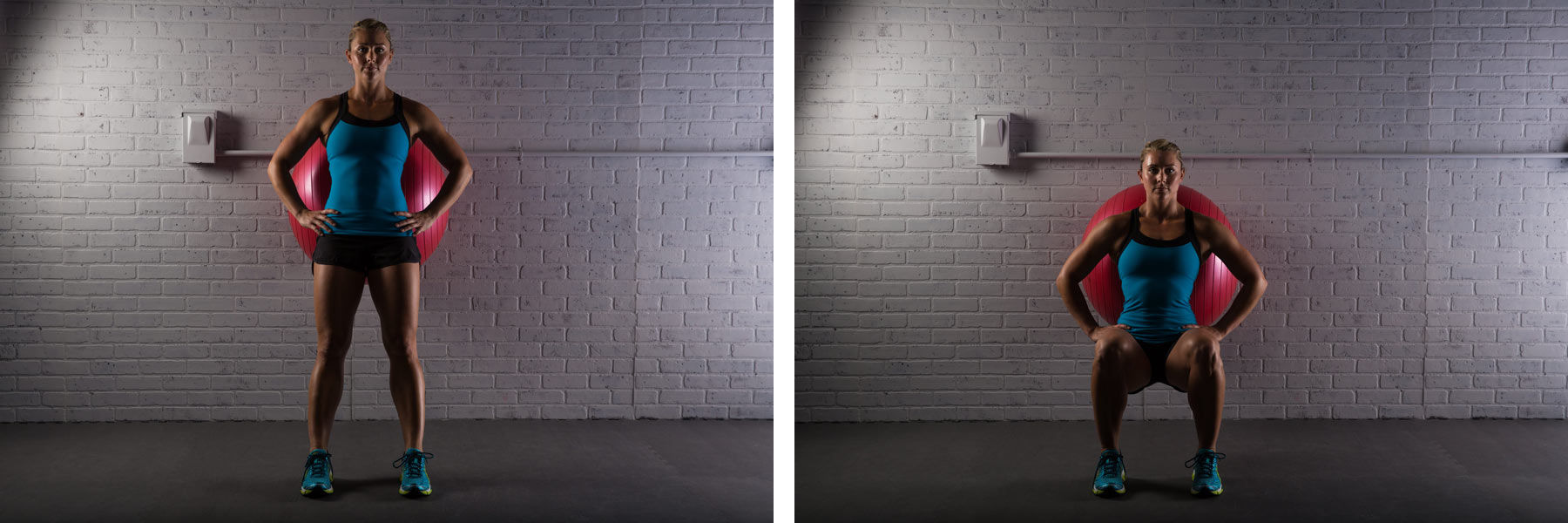
Squats work the major muscles of the legs, including the quads, hamstrings and glutes, and can help improve your daily activities if you use proper squat mechanics. For beginners, training your body to move properly can be hard at first. To simulate proper movement pattern, grab a stability ball and place it against a wall. Lean your back against the ball so it is positioned on your lower back. Place your feet shoulder-width apart and about 12 to 18 inches in front of your hips, so you really are leaning against the ball. Place your hands on your hips and bend your knees, keeping your weight on your heels as you squat down. Push your hips back, keep your chest up and finish when your thighs are parallel to the floor. Press through your heels to stand back up. Variations: Hold dumbbells in each hand, or incorporate biceps curls or shoulder presses during the squat to kill two birds with one stone.
Dumbbell Chest Press
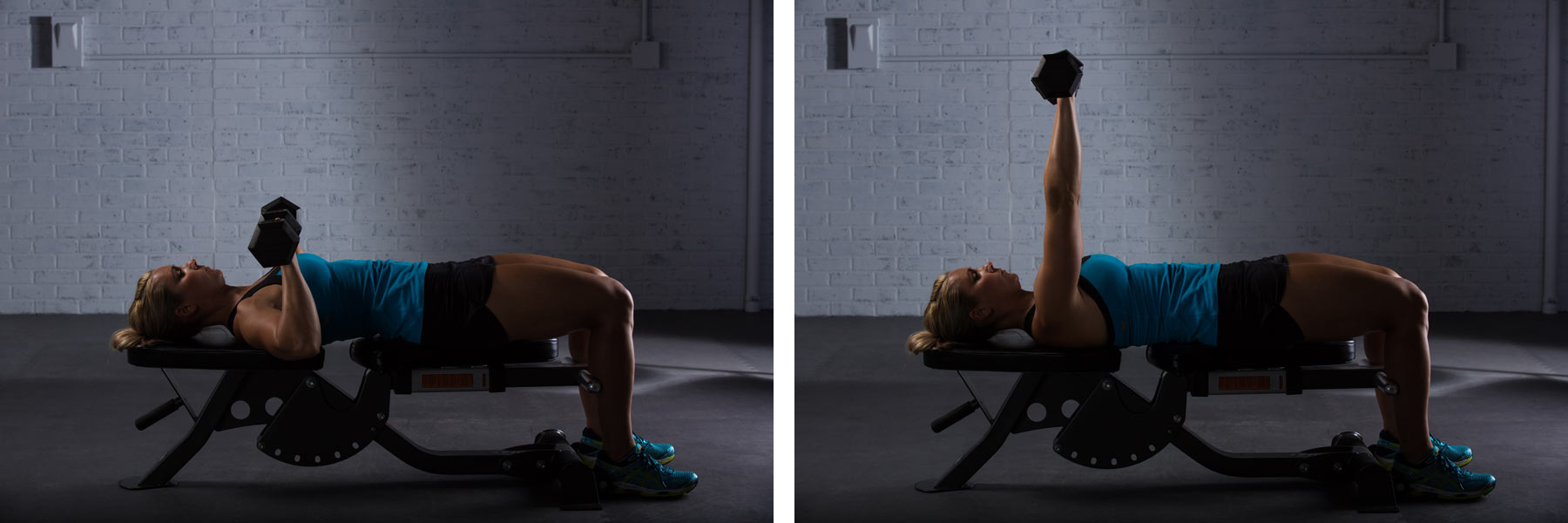
Hold a dumbbell in each hand and sit on a flat bench. Slowly lie back so that your head is supported at the end of the bench. Bring the dumbbells up to either side of your chest, elbows bent at about 90 degrees and palms facing forward. Slowly press the dumbbells up and together over your chest. Pause at the top, and with control slowly lower them back down to either side of your chest, elbows at bench level. Variations: Use a barbell or change the position of your hands to parallel to target different muscles. You can also use an inclined or declined bench to change up the movement.
Stability Ball Crunch

Sit on a stability ball and roll forward so that the ball rests comfortably in the small of your back. Your shoulders and bottom should be unsupported on either side of the ball. Support your neck with your hands, find a spot on the ceiling and keep your eyes fixed on that spot to keep you from tucking your chin to your chest during the crunch. Squeeze your abs and do a crunch, but only sit up about halfway or about 45 degrees from horizontal. This keeps your abdominals engaged during the whole movement. Lower back down until your torso is horizontal or you feel a slight stretch through your abs. If you are accustomed to doing crunches on the floor, doing them on the ball will feel a lot more challenging. Variations: Hold a light medicine ball or dumbbell for added resistance, or try crunches on a BOSU for a similar movement that uses slightly different muscles. For an extra challenge, try adding a slight torso twist at the top of the movement to target the obliques.
Lunge
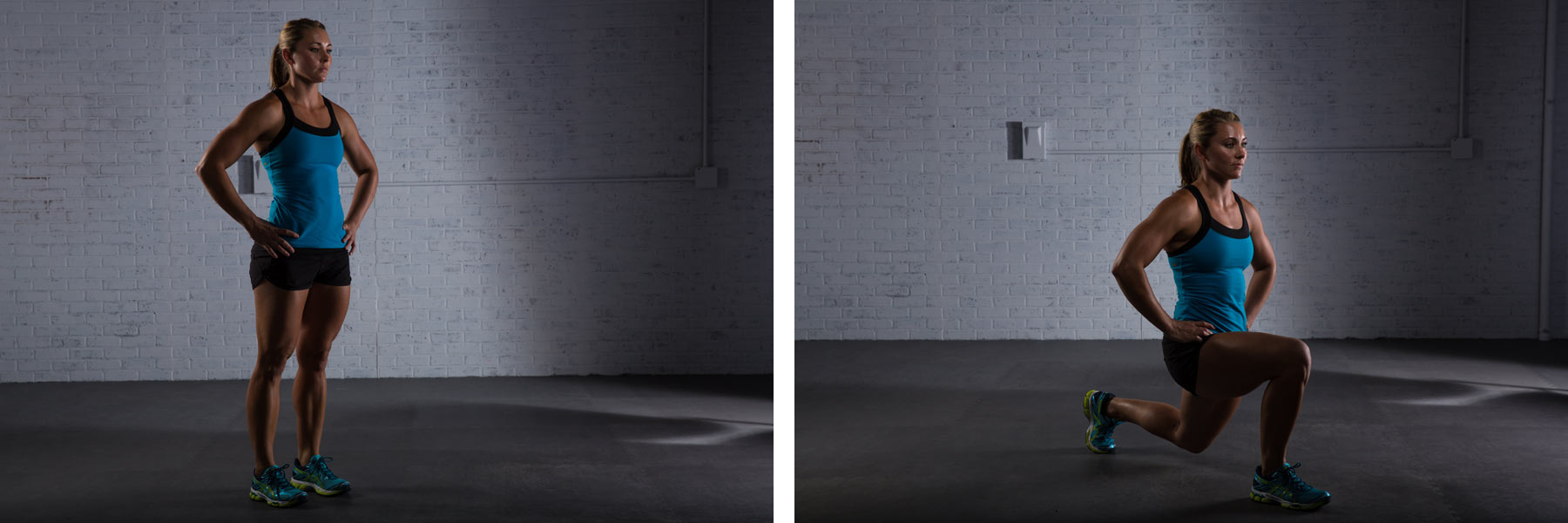
Lunging is an activity that you probably do many times per day without realizing it, such as bending down to tie your shoe or getting out of your car, so keeping these muscles strong and functional is important. Stand with your feet together and take a big step forward with your right foot. Bend both knees to lower your body close to the ground. Keep your chest up and the right knee directly over your right foot, so that your shin stays vertical. Push off your right heel and step your feet back together for a basic forward lunge. Repeat 10 repetitions per leg. You can do all reps on one leg and then switch or alternate legs. Variations: Instead of stepping forward, try stepping backward in a reverse lunge. You can also try continuous walking lunges. For more resistance, hold dumbbells in your hands or place a barbell over the back of your shoulders.
***The woman performing the exercises in these photos is an advanced athlete and participates in strength training on a regular basis.




 by
by 


